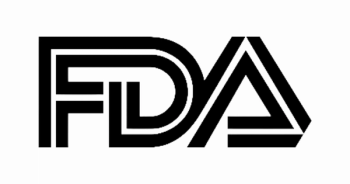
AI-Powered Pathology Tools May Boost Precision Oncology
Stuart J. Schnitt, MD, discussed artificial intelligence enhancements roadblocks, and potential integration for cancer diagnostics with Targeted Oncology.
Artificial intelligence (AI) could revolutionize cancer diagnostics by improving accuracy, efficiency, and workflow, while also handling tedious tasks. However, its adoption will depend on the technology and accessibility at individual institutions and practices.
“I don't think AI will ever replace pathologists [or oncologists], but it's the next new technology that pathologists will employ to help them make better, more accurate diagnoses,” Stuart J. Schnitt, MD, said in an interview with Targeted Oncology. Clinicians who embrace AI will gain an edge, ensuring better patient outcomes as the technology evolves alongside traditional methods.
Schnitt is chief of breast oncologic pathology at Dana-Farber Brigham Cancer Center, associate director of the Dana-Farber Cancer Institute/Brigham and Women’s Hospital Breast Oncology Program, senior pathologist at Brigham Cancer Center and Women's Hospital, and a professor of pathology at Harvard Medical School.
Targeted OncologyTM: How will AI enhanced diagnostics change the speed and precision of cancer detection?
Stuart J. Schnitt, MD: There is probably an international shortage of pathologists, and there was a survey done several years ago showing a major decline in the number of pathologists in North America over the last several years. We're all overworked and overburdened. Cases are getting much more complicated in terms of the expectations of what kind of information we'll provide. I think AI applied to diagnostic pathology can do a variety of things. It can improve workflow and reduce the turnaround time for diagnoses. It can in many ways level the playing field and increase the accuracy and interobserver reproducibility of diagnosis.
Theoretically, it could bring people who have less experience up to a higher level by providing this adjunctive way of looking at cases. AI can also be used in pathology as a second read [or] a QA function, so after a pathologist looks at their slides in the routine manner, they can have an AI algorithm run on them to be sure that they haven't missed something clinically important.
Another thing that AI can do is it can do things that we as pathologists don't really like doing, are not very good at doing, or are very time consuming. For example, I don't know any pathologist who comes into work every day [excited to] have lots of lymph nodes to look at for tumors. If an AI algorithm can screen lymph nodes and identify the ones that are likely to have a tumor, it could save people a lot of time and be more accurate.
To me, the most intriguing thing is there are AI algorithms out there, and I think they'll get more sophisticated going forward, that can do things that humans can't possibly do. They can interpret features and integrate them with other information the way humans could never do that. So, there are many roles for AI in pathology in general, and oncologic pathology in particular.
In what ways would AI-driven predictive models influence personalized therapy decisions, and what are those challenges to using that in practice?
The main challenge in using AI in pathology is that this has to be done on digitized slides. Unfortunately, in the United States, there are not many institutions that are completely digitized and have gone from glass slides to digitized slides. In my experience, there are many more institutions in Europe that do this than in the United States. I think there's a handful of institutions in the United States where the pathology departments are completely digital. Some departments are partially digital, and some basically have no digital capability as yet. To me, the major roadblock in all of this is having digitized slides. Once you have digitized slides, then these algorithms can be applied.
The era of personalized medicine has been here for quite a while, where we try to tailor treatment to patient-specific diagnoses. The way AI can help is to, first of all, ensure that a diagnosis is correct, because if you get the wrong diagnosis, you can't possibly get the right treatment. Also, there are AI algorithms out there that can provide prognostic and even predictive information that pathologists generally can't provide by looking at the slides.
For example, we recently did a study using an AI algorithm to look at the tissue microenvironment in patients who had breast cancer, were treated with neoadjuvant chemotherapy, and had residual disease after neoadjuvant chemotherapy. The standard way we evaluate these cases in terms of prognosis is what's called the RCB, the residual cancer burden score, developed by people at The University of Texas MD Anderson Cancer Center. We compared this AI algorithm looking at the tissue microenvironment to the RCB in terms of predicting outcome. Lo and behold, the AI algorithm was better than the RCB, and the RCB didn't add anything to this algorithm.
If something like this becomes standard of care, this could provide a new way of looking at prognosis for patients after neoadjuvant chemotherapy. Of course, this is only an initial study. It has to be validated in other cohorts, but it's things like that that can provide information that pathologists looking at slides could never provide.
Over the next 5 to 10 years, do you think real-time genomic and molecular profiling powered by AI will reshape treatment paradigms?
The ultimate goal, I think, is to have AI algorithms that integrate everything—clinical information, histopathology, molecular and genetic findings, and radiologic findings—to provide some integrated estimate of prognosis and predicting response to therapy. I think that's far off.
In the short term, what pathology AI algorithms can do is help with prioritizing cases, routine diagnostic issues, quality assurance, and providing information that people in low-resource settings could otherwise not get. For example, for breast cancers, we routinely do immunohistochemical stains for estrogen receptor, progesterone receptor, and HER2. In some low-resource countries, that can't be done, but there are very good AI algorithms out there that can predict the receptor status from routine hematoxylin and eosin stain sections. If, for example, slides can be digitized, those receptor profiles can be evaluated even without doing the stains.
How could pathologists and oncologists start using these types of AI in their practice?
Now, many of the clinicians use an AI algorithm, the equivalent of chatGPT, to provide the notes after an encounter with a patient. So I think that is going to become more widespread. But I think what's important is for clinicians, whether they're in private, community, or academic practice, to understand both the uses and limitations of this technology.
From my perspective, I've been through lots of new technologies in pathology that were supposed to be the latest and greatest and replace everything we've done before. In the 1960s it was electron microscopy, in the 70s and 80s, it was immunohistochemistry, in the 90s and 2000s it was molecular analysis, and now in the 2020s, it's AI. All those other techniques that had been introduced into pathology were said to be revolutionary and changing the way we do things. I think they all were, but they didn't replace pathologists, and I don't think AI will ever replace pathologists [or oncologists], but it's the next new technology that pathologists will employ to help them make better, more accurate diagnoses. I always tell people that pathologists are not going to be replaced by AI, but pathologists who use AI will probably replace pathologists who don't use AI.








































